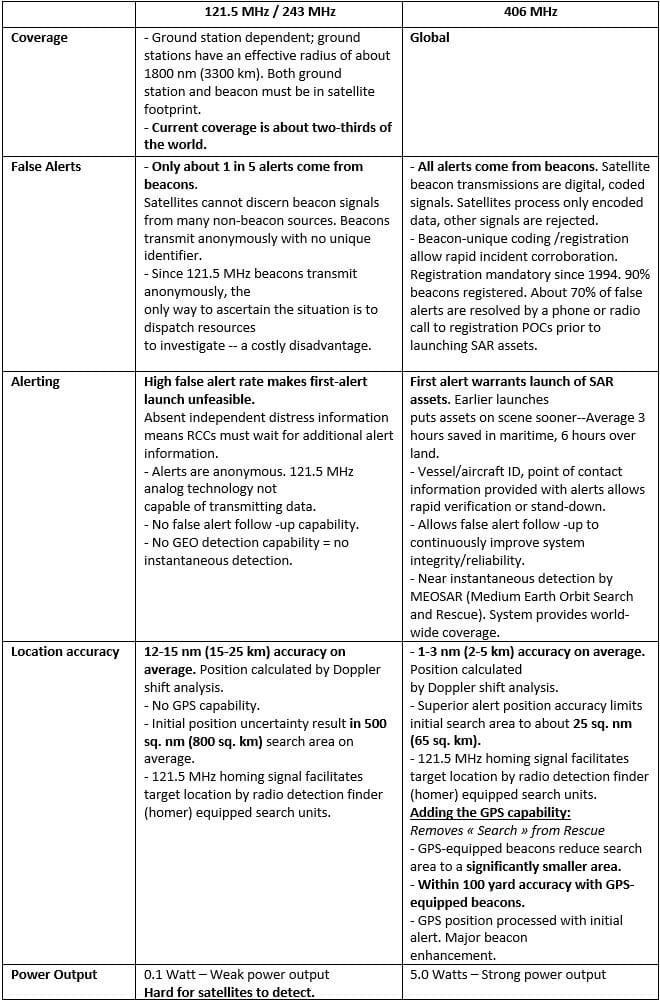What’s Inside Your Emergency Locator Transmitter (ELT)? Part II
The two main items that general aviation professionals and enthusiasts should be aware of are that 406MHz ELTs are the only ELTs continuously monitored for distress alerts and offer better location accuracy by reducing the search area for rescue authorities. Since 121.5MHz ELTs are no longer being monitored, it’s critical that anyone who owns one of these older ELTs upgrades to a 406MHz ELT to increase their chances of being rescued.
The whole point of search and rescue is for rescue authorities to pick up a distress alert quickly and narrow the search area to successfully rescue someone in an emergency situation.
For additional details on the differences between the 121.5MHz and 406MHz ELTs, refer to the chart below from NOAA.

Safran is not only an ELT manufacturer, but we also built the network that supports the ELT. We are the only end-to-end search and rescue ecosystem company in the world, which means something when every second counts. We’ve been a key player in the Cospas-Sarsat program which has helped save over 40,000 lives since 1982, and we’ve seen how owning a 406MHz ELT can make the difference in an emergency situation.


